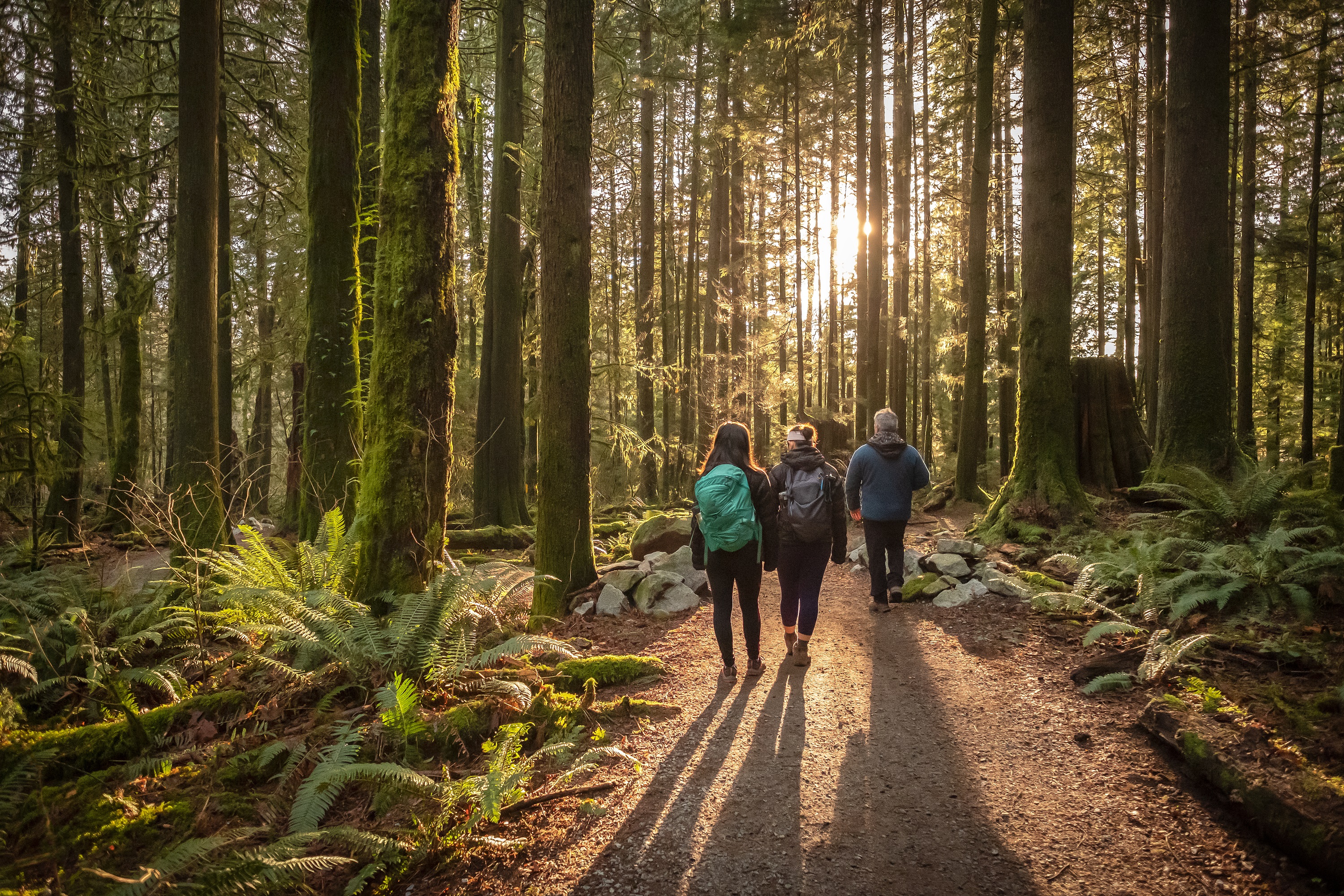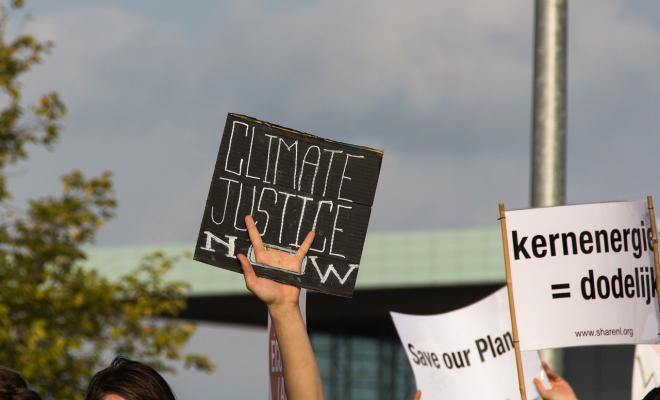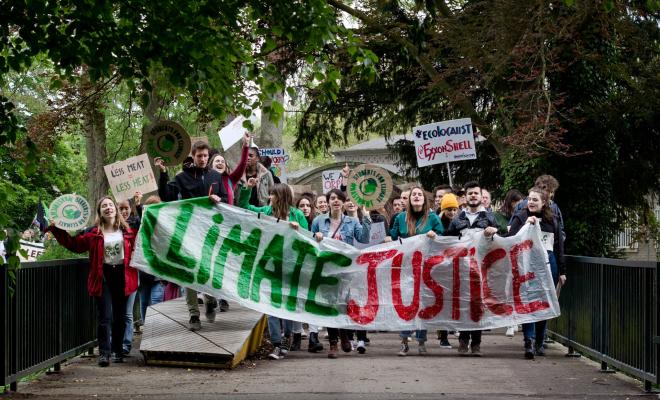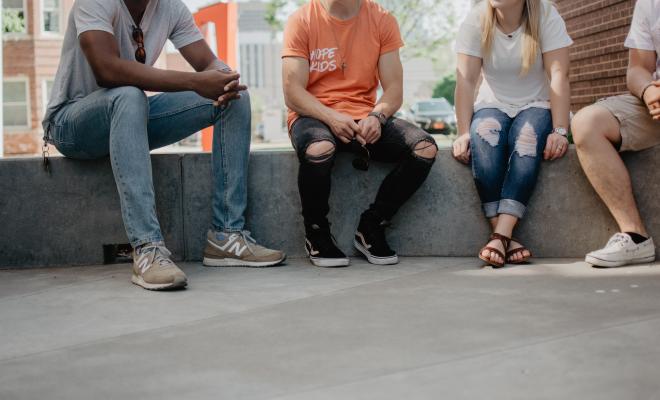18 Oct 2023
It’s sometimes said that caring for ourselves is the most radical form of care that there is. But how many of us are actually doing it? By looking after ourselves and building communities of care, we can effectively fight for a kinder, fairer and more sustainable world.
What is burnout and eco anxiety?
Burnout and eco anxiety are on the rise. But what exactly are they? Burnout describes a feeling of exhaustion and disillusionment stemming from chronic stress. When you’re burned out, you’re likely to feel disconnected and fatigued. Sadly, burnout is increasingly common in activism where people are likely to overwork themselves for their cause.
Eco anxiety is described by the American Psychological Association as a “chronic fear of environmental doom”. Despite emerging recently as a term, its impact is widespread. In a recent study, 75% of young people polled reported to be scared about what the climate crisis could mean for their future. It’s important to say that eco anxiety is not defined as a mental illness. However, both eco anxiety and burnout can lead to anxiety disorders and depression.
Building self care, wellbeing and resilience
At the other end of the spectrum are the terms “wellbeing”, “resilience, “self care” and “community care”. Let’s dig deeper.
The term wellbeing describes a positive state of being. It refers to a sense of happiness, purpose, and optimum levels of prosperity and health. Resilience refers to our ability to deal with change safely and effectively, even when it can be distressing or uncomfortable.
Happily, we can build up our wellbeing and resilience through a variety of exercises and practises, some of which we’ll cover below. Doing things to promote our own wellbeing and resilience can be referred to as “self care”, the simple the act of taking care of ourselves.
Less common is the term “community care”. It’s probably something that we all long to have in our groups and communities, whether we realise it or not. Community care is all about care between members of a group or community. It's rooted in the idea that we all need care at some point in our lives. It removes the power dynamic that is often present in care, where caring can be seen as doing something for someone by another person or group of people. We all need care at some point, and we’re all capable of caring for others.
Why does it matter?
The fact that burnout and eco anxiety can lead to or worsen our mental wellbeing is reason enough. But it can also affect our campaigning. Not paying attention to issues around activist wellbeing negatively affects our group members, the movement, and ultimately, our cause.
Research shows that we stay in activist groups because we enjoy the company of likeminded individuals and feeling a sense of purpose. When activism starts to do a person more harm than good, they're less likely to stay involved.
Oppression, activism, and wellbeing
As well as being aware of the effects of burnout and eco anxiety, we also need to be aware that people from marginalised communities, who experience different forms of oppression, will be at greater risk of facing burnout.
Oppression is where an abuse of power by one group negatively affects another. Certain minority communities are more vulnerable to this such as:
- people of colour
- people from the LGBTQ+ community
- disabled people
If you’re part one of these communities, you’ll inevitably live with greater levels of fear and anxiety as you’ll face more barriers to participate in society freely. This is due to systemic oppression, a term used to describe how power structures, such as governments, supress your needs and subject you to unequal treatment. For example, if you are a wheelchair user living in London, you’ll struggle to navigate the tube system as many don’t have lifts. But sometimes it’s not obvious, like asking a person of colour “where are you from?” assuming they’re from a different country, which may create a sense of othering.
Minority communities are already experiencing greater levels of stress prior to their involvement in activism. And sometimes, these inequalities may be what drives them to get involved with activism. For example, people of colour in the UK are more likely to experience negative impacts on their health and wellbeing because they are more likely to live near busy roads, factories, and other polluting industries. This example of oppression is also called environmental racism.
Being aware of the role that oppression may be playing in your life, or the experience of members of your community and group is important. It’s only through being aware that we can be good allies and start to address these inequalities and give people the support they might need. Have a read of the "allyship and solidarity" section of our anti-racism resource to find out how you can be a good ally.
Tips for taking care of yourself
Mental health awareness is growing. A lot of research has been done around looking after your mental wellbeing, and there are many resources out there. In fact, there is so much it can feel a little bewildering. Here are our handpicked top tips:
1. Communicate
If you decide to do just one thing to start looking after your mental wellbeing, then make it communicating how you’re feeling. Humans are social beings, relating to each other is important, regardless of our emotional state. But being able to explain your feelings and have someone listen and empathise is vital when you’re feeling anxious or burned out. You could reach out to another group member who’s likely to understand where you’re coming from, a friend or family member, or seek help from a trained counsellor. Just don’t keep it locked inside.
Remember, if things feel really bad and you don’t know where to turn, there are professional organisations that are there to help you.
2. Know your triggers
If you’re feeling burnout or anxious, everything can feel overwhelming – but it's likely that specific things are triggering your emotions. Being able to identify and avoid, or limit, these things is a good place to start. For example, you can limit your time watching the news or scrolling through social media.
If you’re in a situation where you can’t avoid your triggers for whatever reason, knowing what they are is still worthwhile as it gives you the opportunity to prepare yourself and employ other skills – like talking with someone – to help you deal with them.
3. Mindfulness and meditation
There are lots of different kinds of meditation. If sitting in silence doesn’t appeal, a guided meditation – like the ones found on apps like Headspace and Calm – might help. You can also find plenty of free guided meditations on YouTube.
There is also such a thing as “walking meditation” and “working meditation”, where you go for a walk, or get stuck into a task that doesn’t require your full concentration, while focusing on remaining mindful. This could mean taking in sensations around you, like the sound of the keys as you type, or the smell of the air as you walk, or simply concentrating on your breathing. The key is to bring your attention to your present moment, rather than rushing into the future or dwelling in the past.
4. Exercise and lifestyle
When we are stressed, some of the most basic elements of how we look after ourselves can go out the window. Getting physical exercise boosts our physical resilience, releases endorphins and can help us step away from the racing mind and into the grounded body.
Similarly, eating healthily, staying hydrated, and getting good quality sleep, are important for maintaining a healthy mind. Research has linked anxiety and depression with dehydration and has found unhealthy eating habits can impact on our mood and mental health. Sleep is also vital to normal cognitive functioning and lack of sleep can severely affect our mood. But here we mean quality of sleep rather than number of hours spent in bed. Try practising some good habits:
- waking up and going to bed at the same time
- not looking at screens before bed
- eating healthily and staying hydrated.
5. Learning
Doing something new can make us feel more capable and confident. Try something you’ve not done before – it’ll even increase your resilience. Perhaps a new form of exercise testing your brain while also getting that endorphin boost or do something creative that allows you to also make new connections – like an art class.
For something simple and practical to do we really recommend this exercise – “Great Dream” by Action for Happiness. You can do it with your group and use it to learn more about what makes us experience greater levels of wellbeing.
Community care and group values
As well as taking care of ourselves, making sure that our groups are happy places where people feel welcomed, comfortable, and have a sense of purpose, is important.
Having space in your group to discuss how you are feeling is a good first step to embedding the ideal of community care in your group. It’s likely that if you’re feeling anxious about the climate crisis, someone else might be feeling the same and may be able to empathise or share coping strategies. Or, if you’re feeling overwhelmed and burnt out, someone else might be looking for the opportunity to take more on. Having space in your meetings to talk about how you are, and not simply focus on task management, will help build relationships within your group and, ultimately, make you stronger.
Group session plan (50-70 minutes)
If talking about your feelings sounds a bit scary you could use this session plan to help break the ice and learn more about how you, and your fellow group members, feel:
1. How are we feeling? (5-10 minutes)
As a group take turns to discuss how you’re feeling in relation to your campaign work or a particular environmental concern. You could do this in an open forum or write in silence on a board. It's likely you’ll start to see some similarities that you can discuss and build on.
2. What do we do to feel better? (5-10 minutes)
Spend time thinking about what you do that makes you feel better and why. Once everyone has had some time to think, share your answers.
3. The Great Dream Exercise (40 minutes)
Once you’ve spent some time thinking about how you feel, the Great Dream exercise from Action for Happiness is a great resource for learning more about what makes a person feel happy and to help you reflect on what you might want to do less/more of to look after your overall well being.
Doing this exercise as a group is great because it is likely you’ll inspire each other to think of new ways in which you could look after yourself, and it will allow you to learn more about how your fellow group members cope so you’ll be on the lookout if a group member has stopped doing activities that you know are importance for their happiness, and you’ll be better equipped to guide them back to happier habits.
Promoting healthy group dynamics
Our groups can be exciting, positive, and empowering places where we get energy and resilience from. But sometimes group dynamics cause issues.
Groups have their own cultures and within them, power struggles, microaggressions, and oppressions from the wider culture are likely to play out. But the way we structure our groups and make space for conversations that challenge underlying assumptions or patterns of behaviour, can transform a group into a healthy and productive environment. Having a set of group values, or a safer spaces policy, for example, can help you agree together how you want to interact and operate. In addition you can also set ground rules for your meetings, so that everyone understands what is expected of them during your time together.
Professional help:
- Samaritans– free 24/7 helpline to talk about anything that is bothering you
- Mind– specialist mental health charity
- Childline– specialist children wellbeing charity
- Stonewall– specialist LGBTQ+ charity
- Mental health support for people of colour
